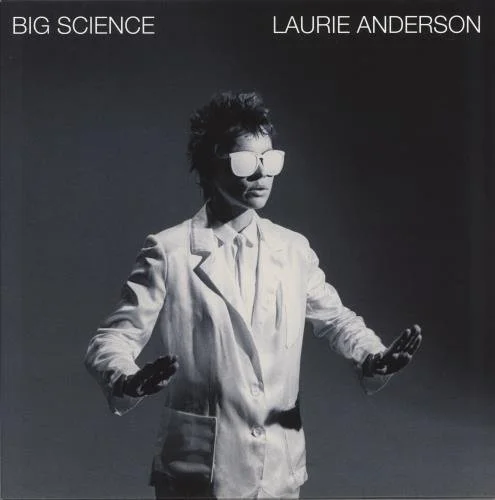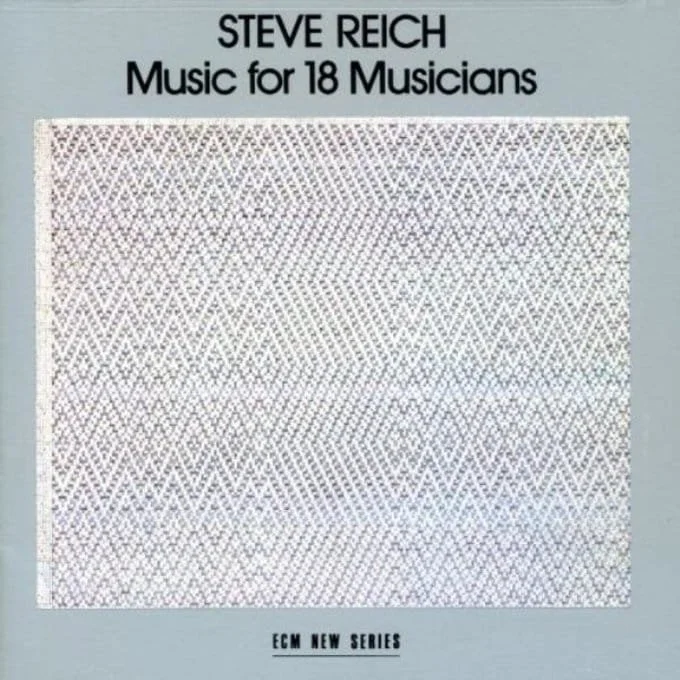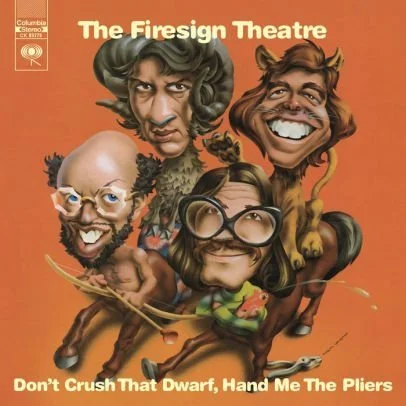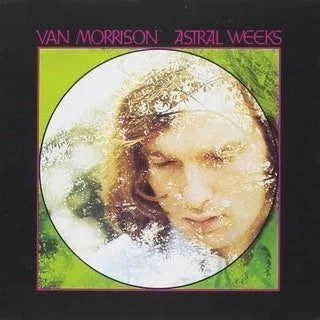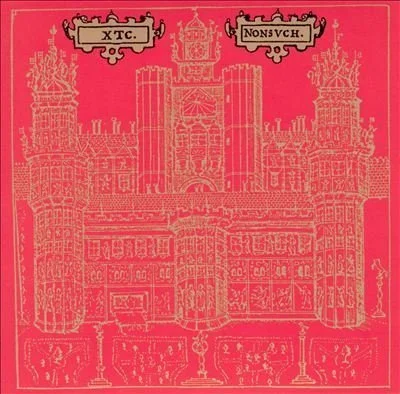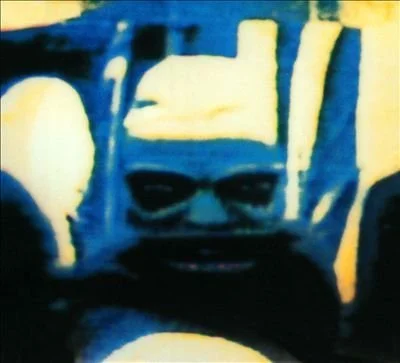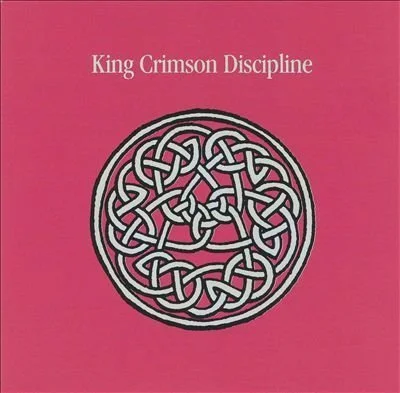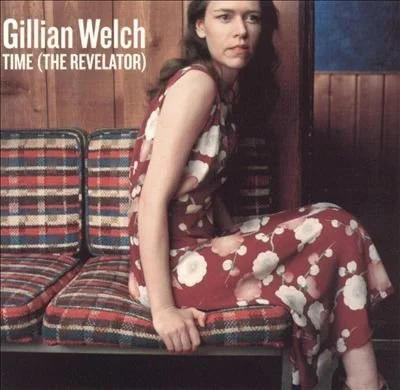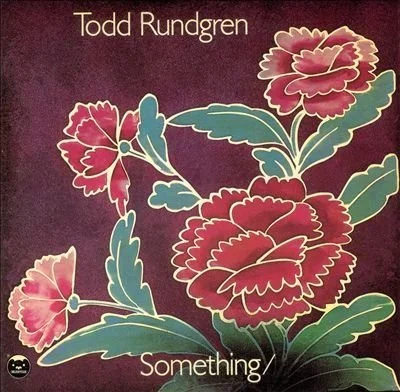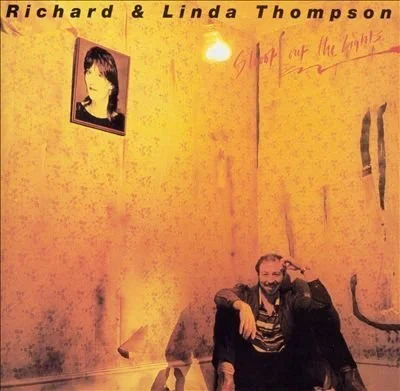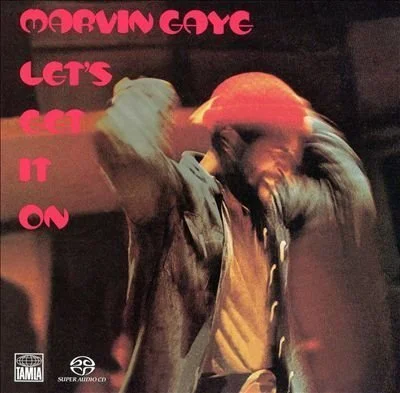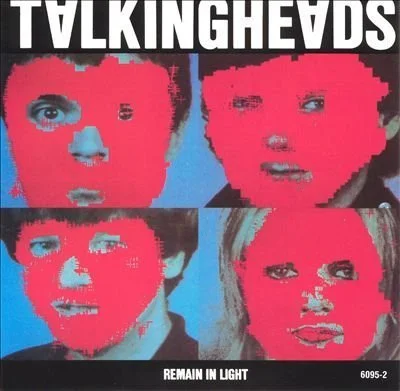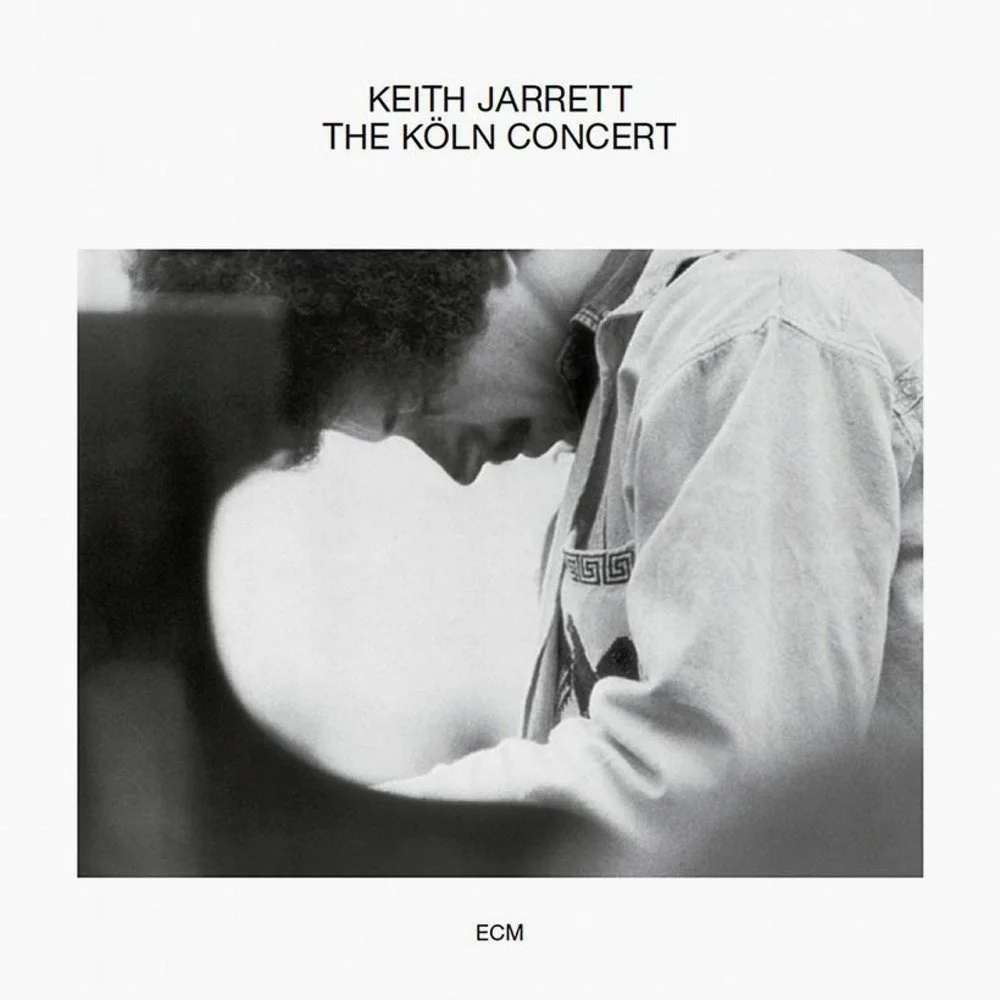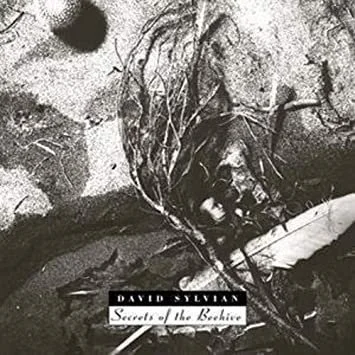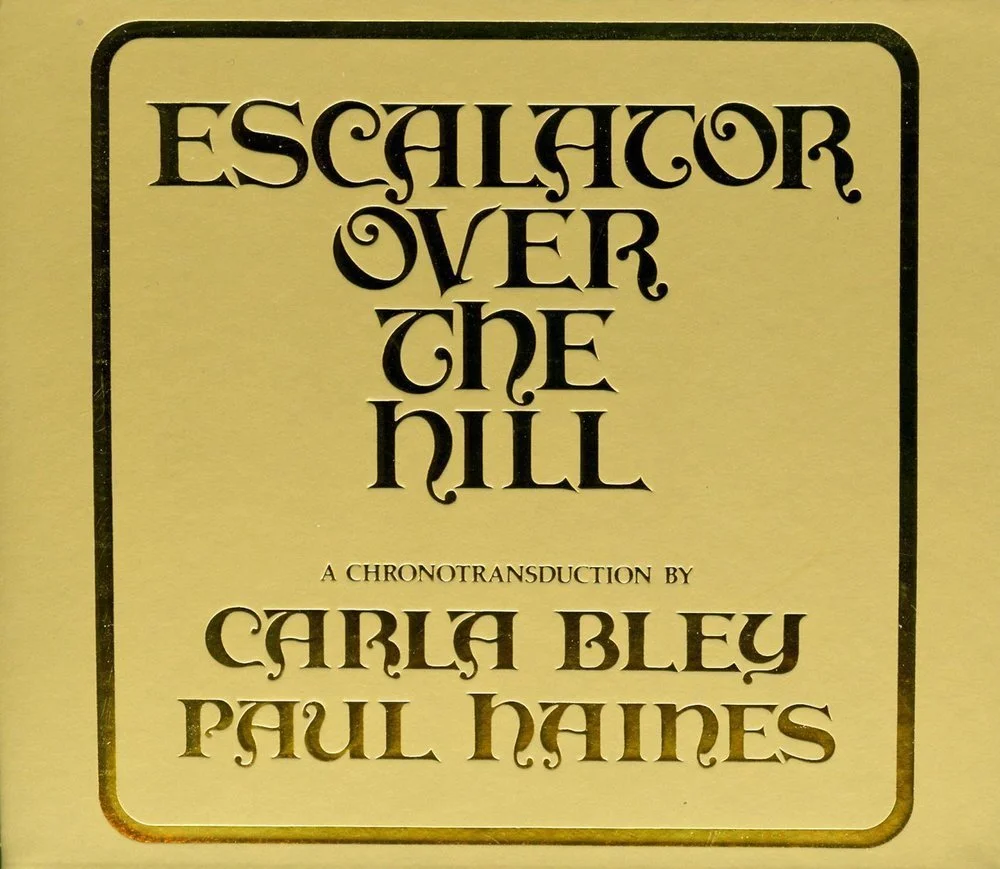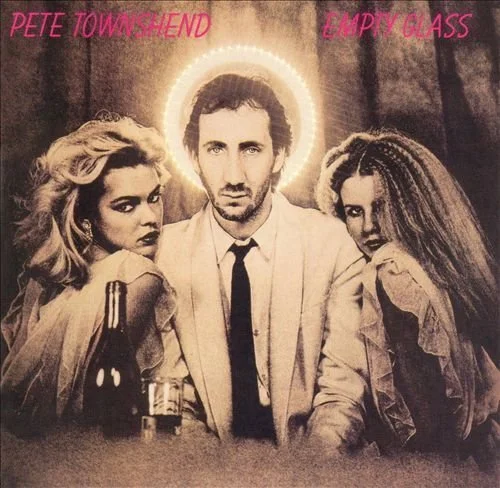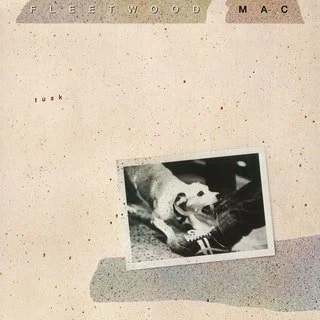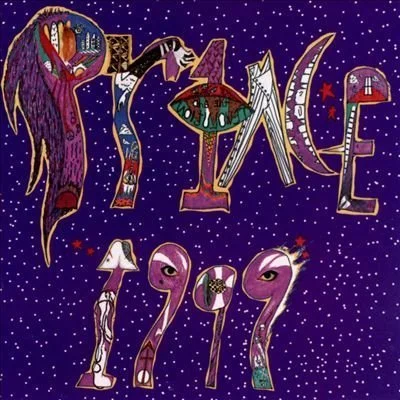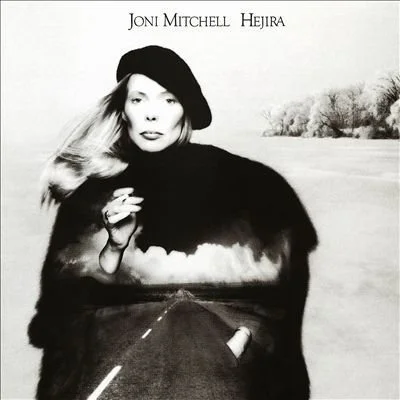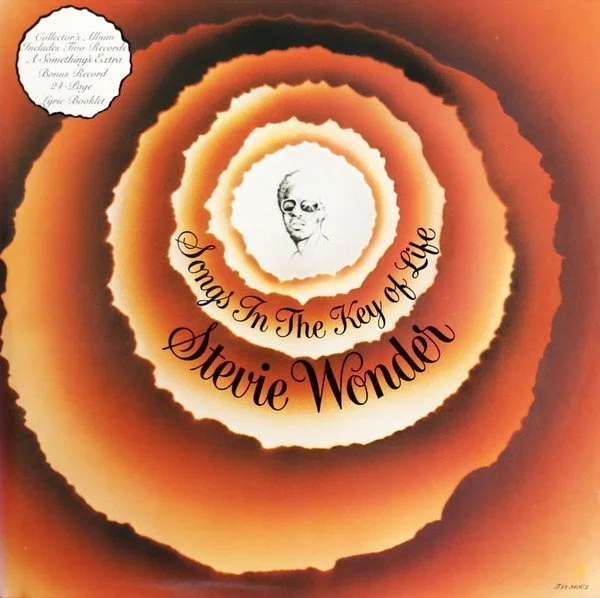Under the Influence – 25 albums
A few years ago, Ben Wittman nominated me in some silly Facebook thing about posting your top ten albums – no words, just the covers. I dutifully took him up on it (can’t say no to Ben), though I couldn’t contain myself to just 10, went to 15 instead. Horrible at following the rules, I simply could not let the album cover speak for itself – I had to write a few sentences to explain my choices. Trying to bend rather than break the rules, I kept these thoughts brief and broad. But the responses I got in the comments prompted me to go further. I found myself wondering why these records meant so much to me. So, I’ve decided to update and expand for this website as my first “musing.”
This list isn’t about “best” or “greatest,” or even “favorite,” but about influence – albums that shaped my notion of music in general, as well as conceptions of songwriting, performance, and production. Other major influences don’t appear here since they were single songs or individual performances. Even as we are shifting back to a focus on the song/single in contemporary pop music, I look to my formative years in the hey-day of the album. There are many multi-album sets on this list. Evidently, I like a good sprawl....
Perhaps unsurprisingly, many of these date from my teen-age years when nearly everything was potentially a “formative influence.” There are a few records that appeared later in adult life at transformative moments when the album either provided a resonant soundtrack or provoked a significant shift in musical direction, or sometimes both at once. At any rate, I think the DNA of these albums is present in the music and recordings I make, even if those connections may not be immediately apparent. We begin the needle drop with…
25. Laurie Anderson – Big Science (1982)
When I went to Boston to attend college, I spent hundreds of hours (and let’s be honest, hundreds of dollars) in used record stores. While thumbing through the bins pondering the acquisition of more classic rock era artifacts, my ears were jolted by the opening track of side two, blasting loudly in the store and out on to Boylston Street. “Ha ha ha ha ha ha ha.” The vocoder that followed sounded nothing like the musty old past, and everything like the sleek future already arriving. I was transfixed. Bought the album. Listened repeatedly. Went to see her stage United States I-IV over four successive nights. I was not in Kansas anymore.
Since then, I have come to realize that Laurie Anderson was a technological humanist. Her observations of modern life ran from micro to macro and back, working on multiple levels at once. And her timing – she was a stand-up comic of the future. Every joke distilled to its essence, separating each word in a phrase with pauses that communicated far more than the syllables she uttered, she was… hilarious. And scary. Every moment counted, even as the “ha ha ha” loop continued uninterrupted for eight minutes. And she demonstrated that the celebration of technology was simultaneously a critique. And vice versa. Really smart, but instantly accessible.
24. Steve Reich Ensemble – Music for 18 Musicians (1976)
In the 1970s, Warner Brothers records began issuing double album samplers of upcoming releases that could be ordered by mail for a buck. Great way to introduce new music to receptive listeners long before all music was accessible on demand. At one point, Warners distributed the ECM catalog and, in keeping with their marketing strategy, issued a collection of ECM recordings under the name Music for 58 Musicians. I acquired it in one of my early forays into Boston’s used record stores thinking I would hear something like Keith Jarrett or Pat Metheny (the only ECM artists I knew of) Instead, I heard the repeating pulse of marimbas and pianos and reed instruments and voices and… I was captivated.
I found myself wondering just what instruments were creating these layers of slowly evolving sound. What operational principles were behind the composition. It sounded both electronic and organic. In retrospect, Reich’s minimalist landmark sits along a continuum of contemporary art music at a global nexus of Africa/Europe/Asia. But at the time, I knew nothing of his history or of his ensemble. It was impossible for me to categorize, but I found it both endlessly intriguing and incredibly soothing. Time froze and stretched, yet it ended up arriving someplace. Like a good 50-minute pop song. The effect of the instrumental layering became a major influence on my own conceptions of musical arrangements – not just of pitches, but of sounds.
23. The Firesign Theater – Don’t Crush That Dwarf, Hand Me the Pliers! (1970)
OK, so… When I lost my collection of Beatles albums in a basement flood (I was a hardcore collector in the mid-70s – had all the band’s catalog – both American and British versions – all the solo recordings to date, and even had amassed most of the Apple records catalog on both 45 and LP. Loved Badfinger and the Radha Krishna Temple. Even Yoko’s Feeling the Space), I turned to a new quest – to have all the 5-star rated albums in the first Rolling Stone Record Buyers Guide. So, the Rolling Stones, Pink Floyd, Who, Zeppelin, etc. records were duly purchased and absorbed.
But in a wonderful quirk, some records that were very much of their moment also received 5-star ratings including a couple of stoner comedy albums that everyone ten years older than me knew intimately, but which none of my age group had ever heard of. This allowed me to expand my self-appointed stature as all round music snob – “Oh, you think Cheech and Chong are funny? You have no idea what a comedy record is. Oh, this? This is the Firesign Theater, you won’t get it. Over your head….”
Insufferable.
BUT – the inventiveness of the recording was so compelling. The non-stop free association of the writing was framed in a specifically focused audio world. Comedy made specifically for the album format – not a set of jokes, not narrated stories – but sound used to convey humor (and a world-weary angst that was probably ingested too soon for a 15-year old). I memorized (and could re-enact) every moment, including the sound effects. The possibilities of sonic landscapes went way beyond guitars, drums, and tape echo.
Later on, when I made some actual friends (I cannot explain that miracle), we would trade bits and pieces of these recordings as our own secret language. Go ahead and ask Greg and Holden and Nick and David where there’s hamburger all over the highway.
22. Bjork – Homogenic (1997)
So now, we leap past the teen years to my mid 30s (a leap in memory I often choose to make). I’m in Harvard Square Tower Records when the weaving of electronic bleeps and drum loops begins to shapeshift into string orchestras and piano. Ears prick up. Then the singing starts. I recognize it as Bjork – she had already earned her “hippest musician” crown since the overly hyped Sugarcubes days. I was so turned off by that hype, that I worked to dismissively avoid her solo career. Yes, Debut and Post are awesome, but I wouldn’t know because of my knee-jerk reaction to instantly hating whatever everyone else/every music critic loves.
But confronted with her genius at the Tower Records checkout line, I had to step out, walk down the aisle, and grab a copy. Because it was so brilliantly assured. So effortlessly melding the electronic and the acoustic, the experimental and the pop. Great attention to detail, meticulous even, yet with her full dynamic range, jaw droppingly, powerfully raw.
Head and heart.
21. Van Morrison – Astral Weeks (1968)
This was one of the 5-star albums I had to have, and as a teenager at the height of the disco era, it really should have registered as a big “huh?” Instead, I found it hauntingly beautiful, so unlike any music I had heard before. It seemed as if he was making up the songs on the spot, improvising whole novels in a single breath. It was dark and mysterious, but very romantic. I included a track from it on a mix tape I sent my teenage girlfriend to impress her with my very mature taste in music. I think she responded with a big “huh?”
When the concept of Birdsong At Morning began to coalesce, I used this album as a template. Delicate acoustic sounds with strings and percussion. My goal was to form a band that could perform this album. That’s not what ended up happening (partly because I couldn’t begin to pull off his vocals in either pitch or attitude). Yes kids, there’s more to Van than the dreaded “Moondance.” He would never make another record quite like this. And no one else has either (sorry Nick Drake, Nico, Sufjan Stevens…).
20. XTC – Nonsuch (1992)
One of many examples wherein my younger sister’s tastes far-exceeded my own. I remember borrowing a cassette of Mummer to play in my Walkman while I mowed lawns when I grew tired of the two other tapes I had on hand. Loved it instantly and became a big fan. Nonsuch exceeded my high expectations. To this day, I think of it as the pinnacle of pop song arrangement – so complex, so meticulous in detail, so confident in execution, and so imaginative in its songwriting that all the audio elements serve the musical and compositional ideas to perfection.
When it came out, I listened to nothing else for months. And to this day, I can’t imagine actually making something this good – just how did they do it, it must have taken decades! Recent re-issues include a 50-minute video of them at work in the studio, and it seems like they get up and just play like that. Even when spending hours on a bad drum machine loop (haven’t we all…), the sessions seem to have moved forward with purpose and precision. It’s pop song craft and record production of the highest order, and most impressively, it’s bursting with energy. It’s like the roughest edges have been polished off in order to reveal an infinite set of textures. Given their status as commercial failures at that point in their career, I’m sure the recording budget was relatively constricted. Not constricted like my own recording budgets, but still probably less than Beyonce’s catering. Still, it sounds like a billion dollars.
19. Rickie Lee Jones – Pirates (1981)
This one may have actually cost a billion dollars, but studio wizardry isn’t really what’s on display here. Rather, a stunning interplay with musicians in the studio that is the hallmark of where the LA session scene was going in the 1970s. Fleetwood Mac, the Eagles, Steely Dan, I know, I know, but…. This record doesn’t go for hits, it goes for impact in other ways. It’s aware of itself as art, but without pretense. Jones was at a confusing period in life – coming off the unexpected success of her first album (and all the attendant pressures on her follow-up), and the end of her romance with Tom Waits. It’s vulnerable and exposed, not unlike Joni Mitchell’s Blue, except Joni was afraid of drums and Rickie Lee has hired the incomparable Steve Gadd.
The patient build of the arrangement in “We Belong Together” exploding in three tom hits only to be followed by shifting the feel from slow 6/8 to exuberant 4/4 shuffle is one of my most favorite moments in recorded history.
I was a senior in high school, playing in a top 40 cover band. One time I decided to quit but was begged to stay. I said, “this isn’t really the kind of music I want to play.” They said, “what is?” I played them this album. We struck a deal and in between Kool and the Gang and Van Halen, we performed “We Belong Together” every week for the 30 drunk folks at the Brass Tap in Asheville, NC. Partay!
18. Peter Gabriel – Peter Gabriel (Security) (1982)
First year of college, a conservatory to be specific. I had a complete loss of faith in myself as a pianist and instead spent most of my time in my dorm room listening to this on headphones. The sonic textures of the new sample-based synthesis grabbed my ear, and led me to explore electronic synthesis as an alternative to piano, a move that salvaged my conservatory career while thoroughly situating me in the zeitgeist (within a year of my Oberheim purchase, everyone seemed to be playing synths…).
But it was the complex ideas of the songs (not the same thing as complex arrangements or performances) that stayed with me. Thematically, “San Jacinto,” “The Rhythm of the Heat,” and “The Family and the Fishing Net” seemed to have no clear precedent, and the total effect of the songs was as established by the sonics as by the words or performance. And you have to give credit for putting something so odd as “Shock the Monkey” on top 40 radio…
And of course, the voice. So would make even more of his singing (and his ability to straddle innovation with entertainment). I had (and loved) the third solo album prior to this but had never heard his work with Genesis. I’ve since gotten familiar with that catalog as well, but in my mind, they are two different people. Ben Wittman and I bonded over this one, so it’s important for that reason as well.
17. King Crimson – Discipline (1981)
Robert Fripp appears in the credit lists of much of the music that has inspired me. I went through a period where he seemed to pop up daily on my turntable, whether with Bowie, the Roches, Eno, Talking Heads, King Crimson, or under his own name (I may be one of the few people that have enjoyed repeated listenings of his minimalist extended Frippertronic loops).
A chance encounter on late night TV (the thankfully short-lived ABC retort to Saturday Night Live, Fridays) presented me with the staggeringly virtuosic musicianship, both individual and more importantly collective. Whereas most prog bands sacrificed the whole in favor of the individual, this band championed the ensemble – virtuosic precision in the interplay; no one and nothing expendable.
On both TV and record, Adrian Belew re-defined guitar tone, Tony Levin performed on Chapman stick, Bill Bruford found the connection between Elvin Jones and Clyde Stubblefield filtered through a decade plus of prog rock, and the mystery figure of Fripp, seated at the side of the stage effortlessly explored polyrhythm/tonality. I bought the album immediately and as the post-punk era blossomed all around me, I lived in this album to the exclusion of almost all other music. Decades later, Birdsong At Morning created a loving interpretation of the ethereal beauty that is “Matte Kudasai.”
16. Sun Kil Moon – Ghosts of the Great Highway (2003)
Kept seeing this on display in various record stores. The image was intriguing, but the cost of CDs tended to keep purely impulse buys to a minimum. Still, something about this record called to me. Saw a used copy in the bin and decided to take a chance. What I discovered was a lushly recorded, mesmerizing cloud of guitars and tastefully played drums with long, long, long songs with minimal chord changes and mumbled vocals that disguised the beautiful melodies and haunting lyrics. I was sold.
The vibe is so well-maintained, even when things get fairly distorted, that it was perfect for long drives – sometimes I let it play through more than once. It’s possible I once listened to it on repeat all the way from northern Ohio to western North Carolina.
Though my own sense of structure, harmony, and melody differs from this music, I was inspired by the character and the mood. Much like the sepia image of the cover, there was a consistency that some might find too “one-toned.” But for me, it was vividly evocative of a type of resigned melancholy that allowed little rays of joy to break through, and I strove to establish something similar with the first few Birdsong At Morning albums.
15. Gillian Welch – Time (the Revelator) (2001)
I was enchanted with her debut album, Revival. But her third album, recorded with just her and David Rawlings’ guitars and voices, was so intimate in performance, and the songwriting so grand in scale that it immediately leapt to my list of important works of the new millennium. Like the Sun Kil Moon record, these songs are long, the tone of the album maintained throughout (with the exception of a concert performance on one song midway through). It’s a serious vibe that feels like the clock is stuck at 2:37am.
The songwriting draws upon so many images from the history of American folk song, from fragments of song lyrics from Harry Smith’s legendary Anthology of American Folk Music through Woody Guthrie and Leadbelly, to Gram Parsons and Emmylou Harris, and the modern process of laptop recording.
The connections she makes form a web of intrigue that is as mythological for me as the mythologies she references. Time layers upon time, ghosts inhabit the sidewalks and bars. She witnesses the sad performance of an out-of-town band playing to an empty club for no money, noting the date as April 14, the same date Lincoln was shot. The same date the Titanic sank. And weaves it all together as the internal workings of a mind that filters the contemporary through veils of the historical past. It’s pretty staggering. Later, fragments of that song appear in another, and the web of American mythology now includes the album you’re listening to. It’s all very meta, very post-modern, and it’s the self-aware highlight of the Americana revival movement that I sometimes find a little too enamored of the romanticized past.
Listen to this album as if it were a novel. Perhaps Cormac McCarthy re-writing Steinbeck and Faulkner…
14. Todd Rundgren – Something/Anything (1972)
As a Beatlemaniac, I was first exposed to the one-man-band-multitrack concept via Paul McCartney’s first solo album. I then became familiar with some of Stevie Wonder’s work where he often played most but not all of the instruments. But this double album set was several levels above either artist in complexity and ambition (Wonder would soon double and triple the stakes). Written, performed, produced, AND engineered by Rundgren, the first three sides of this album feature his expert pop songcraft, but as replicated by a mischievous goofball somehow having been given the keys to the studio. Hi-fi in conception, often lo-fi in its sloppy execution, this album virtually screamed at me – “You can do this too!”
If I only knew how to begin…
This purchase was part of my post-Beatle-flood-armageddon-vouchsafed-by-Rolling-Stone high school education, the vinyl procured by a shopping trip to Schoolkids Records in Chapel Hill, NC while attending a Latin club conference. (I was also in the marching band – the definition of nerd-dom.) My internal hipster cred went through the roof when I brought this copy to the cashier who looked me over once before saying, “good choice.” And indeed, it was. Without a record player on hand, I spent the weekend perusing the packaging with photos of track sheets and other studio artifacts with the interior gatefold spread of the man in full Nixon-parody silhouette, surrounded by music-making detritus and a multitrack tape machine in what appeared to be a room at the Holiday Inn.
Add aspiring studio-geek to my nerd identity….
13. Richard and Linda Thompson – Shoot Out the Lights (1982)
Though I was aware of this album as a critics’ favorite, it took a couple of years to get around to purchasing it, so by 1985, it convincingly posited an alternative version of "80s music." Folk music that didn’t “rock,” but actually rocked (the title track in particular). Linda’s understated singing on the ballads was heartbreaking. Seeming so effortless, it turned out she was traumatized by the fractures in their marriage – a trauma which became manifest in a condition from which she couldn’t produce vocal tones for more than very short periods; her performances were laboriously assembled one phrase at a time.
The album was so different from everything I had heard before, and even my fellow conservatory snobs found it resonant. My first marriage resulted from making a demo recording of Carol Noonan singing some songs from this record, and this album served as template for the band we formed with Rick Harris, Knots and Crosses. K&C never failed to cite Richard Thompson as a primary influence, and we closed almost every set we ever played over a six-year period with a cover of “Walking on a Wire.” Their version was good; ours was better….
12. Marvin Gaye – Let’s Get It On (1973)
Yes, yes, What’s Goin’ On? is the masterpiece, but for me, this is the album I return to again and again. And yes, the title track earns its baby-making background soundtrack status. All well and good, but it also happens to contain some of the the greatest vocal performances ever ("Distant Lover") and concludes with a wholly original, completely transcendent, heartbreakingly sad soul tone poem ("Just to Keep You Satisfied"). The range of expression – when he whispers, you’re seduced; when he screams, you ache for him – is all I could ever aspire to as a vocalist. Sadly, I don’t quite have it in me, though sometimes I give it my best shot singing along alone in my car.
His death happened at a time when I was really delving into his catalog and hit me with the same impact of John Lennon’s murder a few years prior. I felt some sort of inexplicable kinship and his loss felt like the last vestige of innocence and hope I possessed vanished with the news. When other people express the blow they have felt when losing their musical heroes, I remember my private grieving for Marvin Gaye. Other voices have impressed me, but none have moved me like his.
11. Talking Heads – Remain in Light (1980)
When this album was released, it was the first time I felt in sync with contemporary culture (a rare occasion, even now...). It was the soundtrack to my junior year in high school, the one where I jettisoned my honors list trajectory to hang out with the theater kid outcasts. At this impressionable age, I often filtered every moral challenge through a "What would David Byrne think?" lens....
These days, I still marvel at the energy that emerges from the elaborately constructed layers of parts and sounds, rather than becoming buried under them. How can something so cerebral and abstract feel so good?
I know punk was supposed to have re-defined what rock music was, but it always sounded like an angrier version of “Louie Louie,” and other 60s garage-rock anthems. But this album sounded nothing like rock, yet was unthinkable without all the rock-era music that had come before. The music I make sounds nothing like this, but for a moment, I felt as hip as any downtown New Yorker. That moment would pass….
10. Keith Jarrett – The Köln Concert (1975)
This album inspired an entirely new concept of piano for me. In my late teens, I aspired to be the next Keith Jarrett. I thought I might become the next Keith Jarrett, though in reality I was the next sub-George Winston. The idea that he just sat down and made this stuff up in front of an audience was incomprehensible to me. The fact that what he pulled out of the air had structure, logic, coherence, predictability and surprise is why so many of us have devoted hours of our lives going along with him on the journey.
While at New England Conservatory, I had to work to hide its influence as Ran Blake hated this stuff. Nevertheless, the imprint was deep and remains. Even if I rarely touch a piano anymore.
9. David Sylvian – Secrets of the Beehive (1987)
Took a while to adjust to his singing, but the string arrangements and production hit me in the heart from the opening bars. Though Sylvian’s writing is strong, it’s Ryuichi Sakamoto’s string arrangements and piano playing that captivated me, showing me a potential beauty and power in string arrangements that I had never considered before. In that way, this album became a template for kind of string writing I did with Birdsong At Morning and continue to this day.
Somehow, despite the lush production and large ensembles at work, this album still maintains an intimacy not unlike Astral Weeks, though with a tonal palette closer to classic Nick Drake. But Sylvian never comes off as fragile as Drake, and his emotional distancing is antithetical to Morrison pouring out his heart. In time, I grew to really like his singing, and his other albums as well, but this is a singular title in his catalog. He never made another record quite like it, and no one else has either. OK, maybe Sigur Ros….
8. Brian Eno – Another Green World (1975)
Eno informed my teenage mind that there was more to music than the Beatles. I knew he was involved with Bowie and Talking Heads, but he wasn’t on the only Roxy Music album I had at the time. I didn’t know what to expect when I got it, and it met all my expectations. Experimental, yet very accessible. Beautiful, but angular. An album of ideas and invitations.
When I began working with synthesizers and multitrack recording, I made a few instrumentals modeled on some of Eno’s work here.
But his quirky lyric sensibility was also quite attractive, and the combination of left-field pop tunes and offbeat instrumental passages strikes the perfect balance for me. I actually prefer side two of the follow-up, Before and After Science, but it’s the mix of approaches that makes Another Green World a solid listen from start to finish.
7. Carla Bley – Escalator Over the Hill (1971)
I read about this sprawling work for years before I could find a copy. I couldn't imagine what it could possibly sound like, though I tried and tried. Then, one day it was in my hands. And it didn't sound like anything I could have possibly imagined. I attempted to analyze and understand the large-scale musical work, though in the end, Bley’s harmonic language was just a bit beyond my abilities. That said, it contains many powerful moments that absolutely shaped my musical identity. The frequent close-interval dissonance of multiple Jack Bruce vocals in full-throated belt, segueing into Linda Ronstadt and beautiful piano cascades.
The list of personnel is so broad, touching on jazz/rock/country players, often in tandem – yes, John McLaughlin is here in all his distorted glory, but so is Charlie Haden not only on bass, but creating a multitracked mock high lonesome bluegrass harmony group (just as he had been raised to do). And Don Cherry not only plays trumpet, but intones a mantra for almost ten minutes (again a gain a gain an na naya naya…) A genre-busting manifesto that formed the template for actively challenging musical and, more broadly, cultural assumptions. An acquired taste, but when it resonates, it resonates loudly. And beautifully.
6. Pete Townshend – Empty Glass (1980)
During my intense period playing catch-up with the rock canon, there was one rock elder putting out vibrant, contemporary music. Liked the songs, LOVED the sound. While I owned Who’s Next and Tommy (not the original, but the soundtrack… such are the perils of growing up in the 70s), I wasn’t able to fully contextualize how Townshend’s past was clashing (literally) with the current punk music scene. His love letter to the Sex Pistols was both metaphorical and literal, and in hindsight many moments on the album reveal a grappling with his sexuality that went completely over my head.
The layers of vocal harmonies and the passionate command of Townshend’s lead vocal performances were leaps and bounds beyond anything he had (often wince-inducingly) contributed to the Who. For me, the big shout-out goes to producer Chris Thomas. The sound is rich and detailed, but hits with real verve. He was on a roll with the Pretenders debut, not to mention the Sex Pistols, and of course his long run of Roxy Music. Plus, he mixed Dark Side of the Moon. PLUS he essentially produced a quarter of the White Album. His influence over my own approach to record production rivals that of George Martin. Possibly exceeds it…
5. Fleetwood Mac – Tusk (1979)
Some time ago, this would have seemed an odd choice, but the gorgeous mess that is this album has proven oddly compelling over the years, and its stock has risen, especially amongst critics that are less than enamored with Rumours. Even at the time of its release, Greil Marcus positioned this as a punk album in its conscious attempt to thwart all commercial expectations and challenge pop norms. I would argue that this is what Escalator Over the Hill might sound like if Brian Wilson had written it.
Lindsey Buckingham’s experimentation within the 3-minute pop song form still sounds fresh to my ears, and anyone that can spend a million dollars in studio time, only to use demos recorded in his bathroom at home is certainly subverting industry norms, and likely disenfranchising himself within the band, a dynamic that was already quite publicly strained.
I always find Christine McVie underrated as a pop songsmith and vocalist, and one of her songs begged for a Birdsong At Morning cover. But for me, the highlight is Stevie Nicks’ “Beautiful Child.” Here, she presents herself as vulnerable without being fragile while Buckingham and McVie create layers of instruments and voices that ripple outward and return amplified. One of my favorite productions and evidence of how a band can pull together even as they pull apart.
4. Prince – 1999 (1982)
A truly singular musician - and one I listened to daily for much of the 80s. I endured the withering mockery of many of my conservatory friends, until Miles Davis said he was cool and Purple Rain dominated the world. This is not his best album, nor is it really my favorite (Sign of the Times and left-field choice Controversy have to vie it out), but it's the one I spent the most time with. This album is full of Linn Drum and Oberheim synthesizer, my two weapons of choice in my own nascent recording and performing career. Coincidence? I think not.
This is what Todd Rundgren would sound like if he started out a decade later (and had the powerful voice, sexual presence, and singularly quirky lyrical sense).
But really, before 1999, nothing sounded like this album. After its release, almost everything did. You can hear its influence on so many artists and records that even if he weren’t the dynamic performer and constantly evolving creative force he was, his mark on popular music would be enormous just for the production and arrangements. He’s so good at everything (and got better in the decades that followed, both as a singer and especially as a guitarist) that it’s easy to overlook his abilities in every aspect of pop music-making. Prolific and fast, some of my favorite pieces of his were conceived and completed in a single recording session. And the following day, he would start another one. Genius without question, though not to everyone’s taste. Some folks aren’t all that into Mozart either.
3. Joni Mitchell – Hejira (1976)
Some critics feel that she loses the focus that made her early work so powerful, but I find her expanded meditations full of depth, striking images, and extended metaphors. And the patience of the music is so compelling. The lyrics, unsurprisingly, are crafted to perfection. Her bent towards introspection is still at the forefront of the writing, but now her internal dialogs reflect more of the world around her as she seeks the refuge of the road. “Furry Sings the Blues” works on SOOOO many levels, its subject matter ranging from the disparities of the music industry that bestow fame and wealth on one white musician while a black one lives in forgotten destitution, through the complex erasures of lives and cultures in urban redevelopment, to her recognition of her entitlement even as she finds a moment of connection in an aging blues singer’s reluctant lament.
As great a lyricist as she is, her melodic and harmonic sensibilities are as unique to her as Prince’s drum machine and synthesizer soundscapes are to him. This album in particular often puts in me a trance state where the words float by without connecting while the sounds engulf my heart. Special MVP award goes out to Jaco Pastorious who seems to fully understand her musical language. Though Joni has said that Jaco's multiple bass tracks might be mixed a little high, their conversations feel like she’s been waiting all her life for him to show up. I think the interplay between these two is astoundingly beautiful, and completely erases the distinctions between folk/jazz/pop/whatever. I aspire to even a fraction of the mastery on display.
2. Stevie Wonder – Songs in the Key of Life (1976)
It felt like a privilege to be invited into his world every time one of these songs came on the radio. My first awareness of pop music as art. A double album with an extra 4-song EP, the weakest song would have been anybody else's career high point. The scope, the depth, the focus, but most of all the sheer joy in the act of making music - staggering then, staggering now. Nothing even comes close.
The world got to watch the 12-year-old genius grow into a 25-year old genius (his age when this album was released) before their eyes. This album capped an unprecedented and still unmatched run of five insanely great albums (with one arguable exception), all released in a five-year period. And even then, it is miles beyond his previous work.
In a more enlightened age, this album would have won the Pulitzer Prize for composition. But music that comes out of the pop music industry is often dismissed out of hand as “not serious.” Sorry, but this album is as deep and powerful as anything Bach/Beethoven/Wagner ever composed. Sometimes individuals who possess such gifts are underappreciated, even as they are celebrated. Yes, the world knows he is good. But to truly come to terms with how good, we would have to dismiss almost all other music made in his lifetime. What business do most of us have writing and recording when we could just listen to this every day for eternity.
1. The Beatles – The Beatles (aka The White Album) (1968)
Yes, it's number one, it’s top of the pops...
Given that the Beatles are the reason I decided to dedicate my life to making music, they had to top this list. But why this album? My first Beatles albums were the red and blue compilations. So, I figured I knew about all their best songs. But on a visit to my far hipper older cousin's house, while he was off seeing the Who, I chanced upon this oddly packaged double album. I recognized only a few song titles, and as the record played, I was introduced to a vast world of musical ideas and expression. Not mesmerizing in the way that their 1967 studio wizardry commands, but perhaps more captivating because these mysterious gods seemed much more like real people. Real people struggling to discover their true identities in a world that saw them as gods.
It's the audacity of public introversion that continues to hold my attention - their flawed humanity revealing depths of feeling missing from much of their previous work. It was evidently a difficult time for the band, and an air of melancholy drifts throughout the recording. But the sheer musical range on display is staggering. Beach Boys knock-off, sure. Maybe a little trad jazz. A dose of plaintive folk. Some proto Zeppelin. A distillation of Stockhausen. A nightcap of Mantovani schmaltz. It’s all here and sounds effortless. Who else could have done it? And then sold it to millions of people? On this album, The Beatles constructed their own universe, infinitely expanding.
Yeah, it’s a little long. But it’s perfect for the guy that loves a long sprawl...

